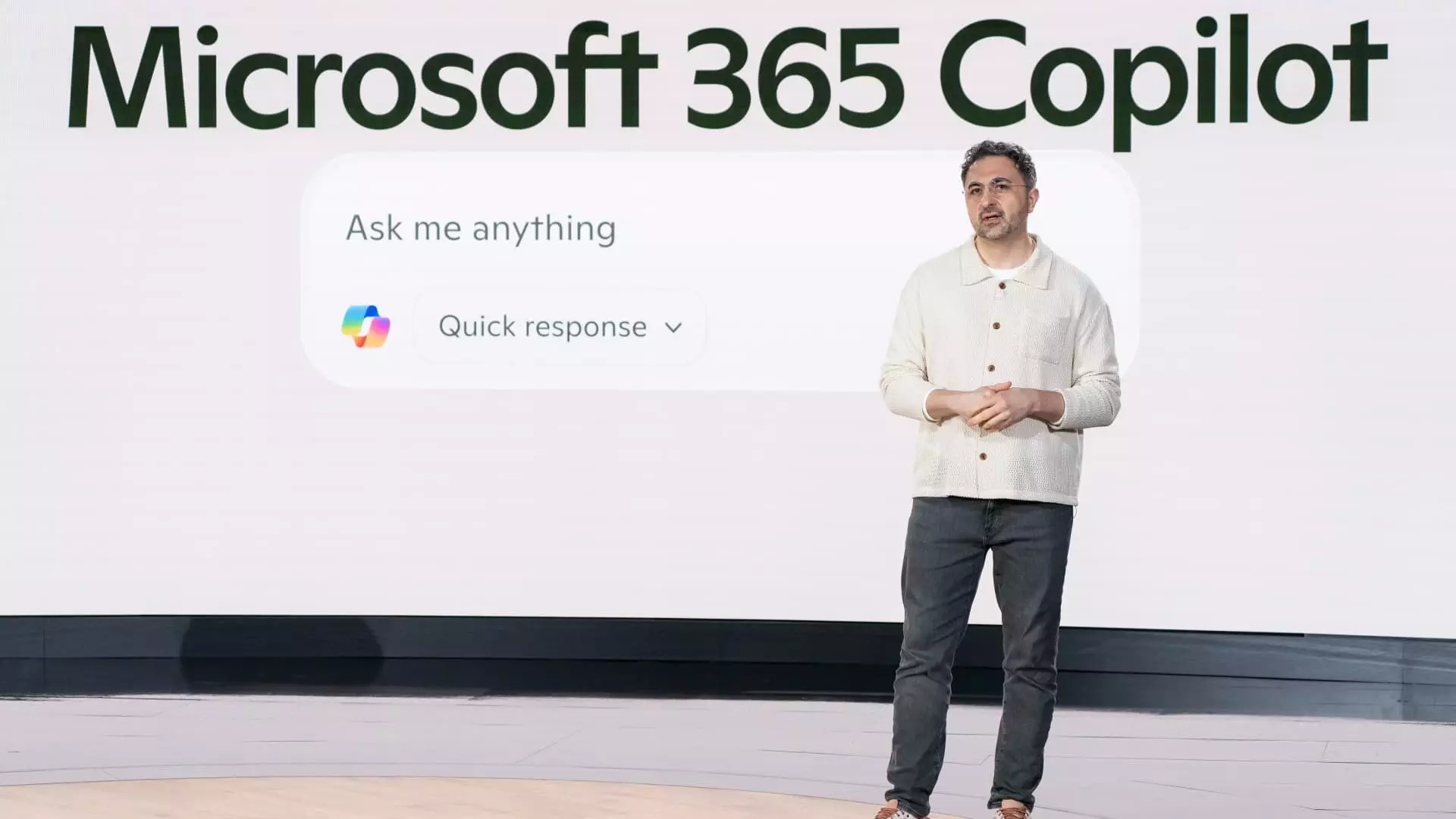Artificial intelligence (AI) has become a buzzword echoing through tech corridors and corporate boardrooms alike. As companies sprint toward the horizon of innovation, Microsoft’s approach to leveraging AI and graphics processing units (GPUs) raises eyebrows. Rather than diving headfirst into cutting-edge developments, Microsoft has opted for a philosophy that suggests waiting and learning from others might be its greatest asset. The company’s CEO of AI, Mustafa Suleyman, explained their “off-frontier” strategy, underscoring several compelling reasons for this cunning restraint.
1. Learning from Trailblazers
In the fast-paced and ever-evolving world of AI, one might argue that being first is everything. However, Suleyman’s perspective offers a refreshing counter-narrative that challenges the desire for immediate supremacy. By adopting a position three to six months behind the industry’s frontier, Microsoft can observe and analyze real-world applications and failures. This calculated delay allows the company to refine and target its developments, leading to a better-aligned product that effectively addresses real user needs. This stands in stark contrast to the rush that typically leads many to overreach, producing models that fail to resonate in the market.
2. Cost-Effectiveness Drives Innovation
A significant benefit of waiting in the AI race is the financial advantage it brings. By opting not to blaze a trail with untested models, Microsoft avoids the steep costs associated with pioneering technology. Suleyman makes a clear distinction between extravagance and efficiency in AI development. Building models that are not yet proven can lead to inflated budgets, while concentrating on established needs allows for more strategic allocation of resources.
As businesses worldwide grapple with economic uncertainties, Microsoft’s approach reflects a prudent usage of capital that prioritizes sustainability over ephemeral glory. In a time when every penny counts, taking a pause to observe the winners and losers in AI expands the canvas on which Microsoft can paint its future successes.
3. Partnering for Progress
Crucially, Microsoft’s ability to harness relationships is central to its AI strategy. Through collaborations with OpenAI and other emerging firms, Microsoft has cleverly positioned itself both as a leader and a learner. The coalescence of resources ensures that they can tap into groundbreaking models while also developing internal capabilities.
This duality is essential, and it protects Microsoft from the pitfalls of sole reliance. OpenAI has provided formidable models, but Microsoft’s investments set the groundwork for a self-sufficient future. As Suleyman puts it, the objective of “doing AI self-sufficiently” is a mission-critical endeavor that safeguards Microsoft from the volatility of partnerships in the tech world.
4. The Copilot Connectivity
Exciting developments continue within Microsoft’s ecosystem, especially with its Copilot initiative. The upcoming feature that allows the system to retain factual memory of its users is a paradigm shift that draws upon established learnings from previous interactions. Such a move signifies more than mere technological prowess; it illustrates a deep commitment to enhancing user experience by tailoring interactions in a meaningful manner.
Users increasingly crave personalization, and Microsoft’s strategic pivot towards incorporating learned data ensures that its AI systems not only augment abilities but also align closely with user expectations.
5. Balancing Competition and Collaboration
The tech landscape is notorious for fierce competition, yet Microsoft’s relationship with OpenAI illustrates a balancing act between competition and collaboration. Suleyman’s acknowledgement of their mutual dependency is reflective of the broader tech ecosystem where innovation often emerges from partnerships.
However, the recent shifts—such as OpenAI’s potential entanglement with Oracle—signal complexities that could challenge this balance. Despite these tensions, Microsoft remains committed to leveraging OpenAI’s advancements while cultivating its internal capabilities; a wise positioning as the industry navigates shifting allegiances.
6. Embracing a Vision for the Future
The long-term perspective confided by Suleyman is indicative of deep foresight central to Microsoft’s philosophy. The prioritization of internal AI development supports a vision that extends well into the next decade. While competitors chase ephemeral accolades, Microsoft’s resolve to build resilience within its AI teams indicates a foundational shift—a move away from transient success towards lasting impact.
By focusing on building at a thoughtful pace and allowing the AI landscape to mature, Microsoft is investing in a future where it can position itself with both depth and breadth in the AI realm. As market dynamics evolve, this calculated conservatism may just prove to be the pioneering strategy other companies fail to master. In a world awash in rapid advancements, there is merit in the art of moderation.

